Making homemade pizza like a pizzaiolo (pizza master) or close to is one of the best things you can do in your kitchen. You have fun, it is something you can enjoy alone or with your family, and the result is worth it. Follow these tips to avoid the most common mistakes making pizza and, above all, trust your new oven to make a pizza to become a legend.
The most important thing: homemade dough
Making a homemade dough is not hard, and even though we will talk about many different recipes in other posts, this could be the right way to begin to practice: 300 g of strong flour, 195 gr lukewarm water, 2 gr of fresh yeast, and 9 gr of salt. Let’s go. Put all the ingredients together, and then you can choose between letting the yeast work or knead the dough. You knead-to-know that. Sorry for the joke.
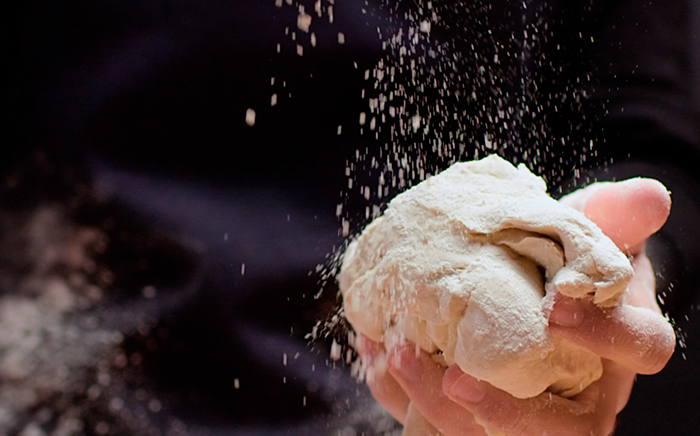
We always recommend kneading. You get tired, and it takes some time, yes, but it also means fun, and the dough will get some air, something you will need later. Eventually, you will improve your kneading technique, and it will take you fewer minutes, but you will be more efficient. When you finish your kneading, let the yeast do the rest of the work.
If you have already kneaded it, wait until it doubles its size. You can put a cloth over it and let it rest at room temperature. If you don’t knead the dough and the yeast is working alone, let it rest in the refrigerator for 24 to 48 hours, and it will be perfect for baking it later.
Homemade tomato sauce too
The base of every pizza is tomato sauce. The goal here is to make this sauce as thick as you can but without losing the taste, just the water. Thanks to this, the dough will not be wet, and we will keep that crunchy touch of the pizza crust. You have to cook tomato sauce very much to reach this point. The best tomatoes for pizza are Italians, San Marzano, but they are not easy to find so you can use pear tomatoes.
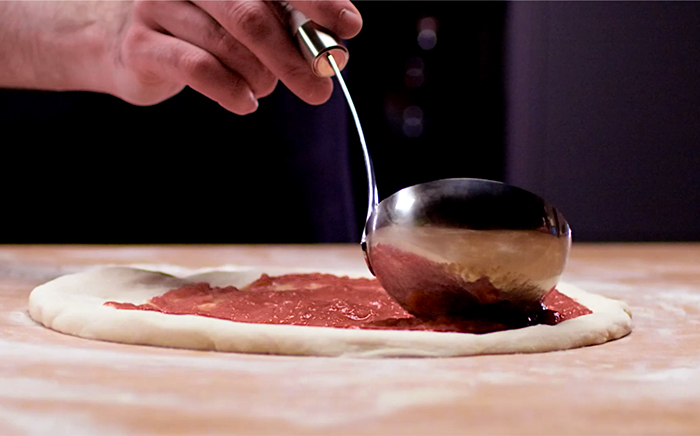
Keep in mind this is about cooking the tomatoes slowly but also add the right spices. Besides salt, use black pepper, basil, and oregano. With basil, we can add like twelve leaves; but the rest, add to taste. Don’t be afraid of trying different spices until you find the ones you love.
Don’t use sugar to reduce the acidity of the tomatoes: the spices and the rest of the ingredients should be enough. However, if you think the pizza could taste too acid, it is ok to add some.
The oven: the key
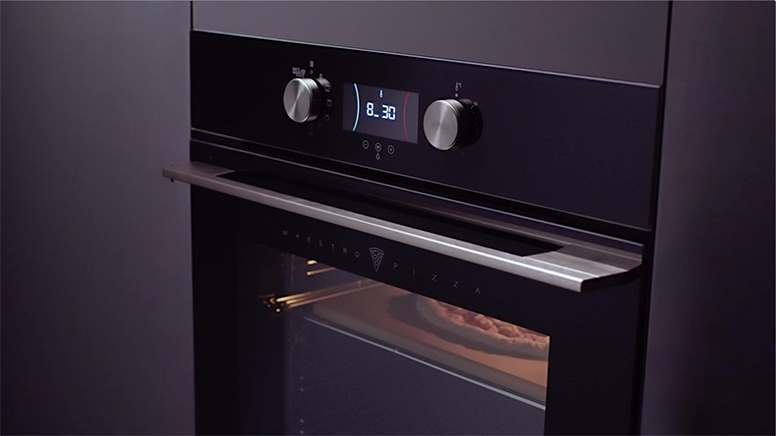
Pre-cook the dough a bit before adding the rest of the ingredients. Put it for two or three minutes in the oven before adding anything else. It will get a chewy touch, and the pizza will also lose part of the moist making it crunchier.
Professional pizza restaurants have wood-fired ovens, with a temperature inside around 400 °C and 500 °C. We cannot reach those temperatures at home, but we can be very close with 340 °C, thanks to MaestroPizza. The result will be like a pizza right away from the mamma of a restaurant in Naples.
In a modern oven, you can have a pizza in around 8 or 10 minutes, or even less, so there is no need to reach 400 °C. But you will need to use all the heat capacity of the oven, including the fan. If you can have an oven with pizza function to cook, the difference is remarkable.
Use a pizza stone
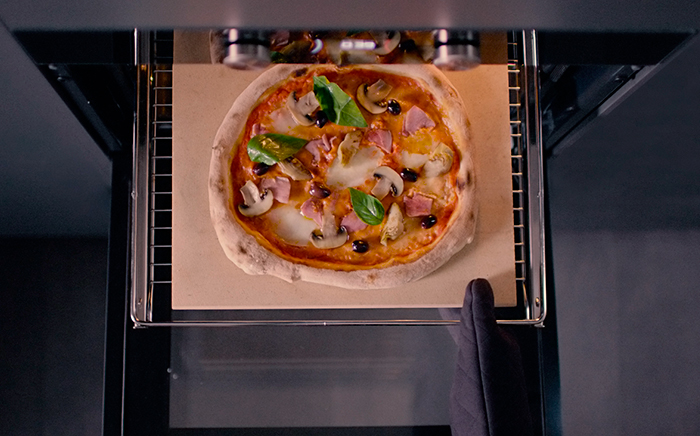
A pizza stone not only helps to spread heat evenly in the dough, but it will also help to remove moisture from the crust and the tomato sauce, giving a better finish to your pizzas. A pizza stone will be hotter than the oven itself and that will improve the result.
Remember to put the pizza stone in the oven when it is cold but be sure the stone is dry also. Wash the pizza stone after use with a cloth, adding water and some soap, nothing else. Set aside, and don’t use it until it is dry again. Use a scraper to remove any stuck piece of food, but not a scourer or any other product.
Use top quality cheese
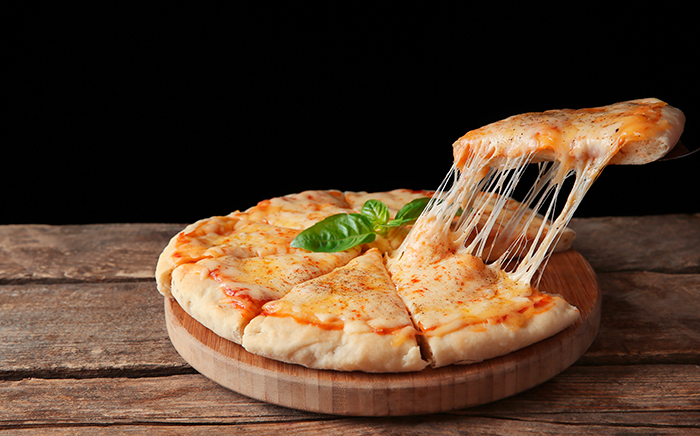
There are not many types of cheeses recommended for pizza. They can be cured or fresh, but you need to look for some particular cheeses. Mozzarella from buffalo or cow milk is the star of the cheeses for pizza, thanks to how stringy it is and that golden brown colour when cooked. But there are more cheeses you can try with your pizza.
Parmesan, quartirolo, grana padano, ricotta, gouda… can work fine with pizza, though the bubble will be different. You can also use other types of cheese in small portions. But the point here is to choose always top quality cheese because the result is worthy of it.
A few things about toppings
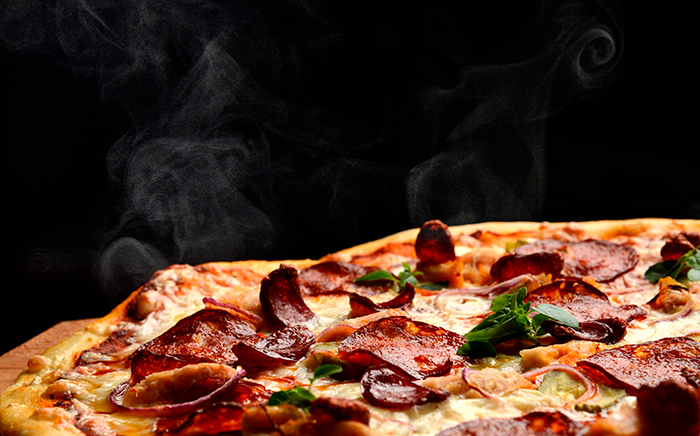
When choosing the ingredients, the rule is… no rules! You can use whatever you want to in the pizza: bacon, prosciutto, ham, tuna, anchovies, onion, pepper, olives… yes, even pineapple. But remember: less is always more.
Traditional recipes usually don’t have many ingredients relying on the taste of the crust, tomato and cheese above other toppings. We are sure they did that for a good reason. If you put many ingredients all over your pizza, you probably cannot perceive the different tastes, and you will end up with a bunch of weird flavours in your mouth. There is a sort of four-ingredient rule for pizza outside, but creativity is queen here too.
It is also good that some toppings, like onion, pepper, or chicken, are cooked a bit in a pan before putting them all over your homemade pizza. That will keep the juices, and they will not get burnt in the oven. It is common to do it too with those ingredients with more water inside, like mushrooms or spinach. If you pre-cook them, you intensify flavours and remove part of the water, so this will not make the base too wet later.
Making a homemade pizza like a pro is about choosing high-quality ingredients, a good dough and a better oven to give that finish we are looking for to balance flavours. And all this to enjoy a good, delicious, homemade pizza and the beautiful process of creating it.

